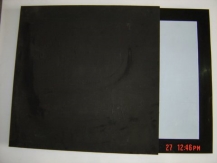The American Association of State Highway and Transportation Officials (AASHTO) is a standards setting body which publishes specifications, test protocols and guidelines which are used in highway design and construction throughout the United States. Despite its name, the association represents not only highways but air, rail, water, and public transportation as well.
The American Association of State Highway Officials (AASHO) was founded on December 12, 1914. Its name was changed to American Association of State Highway and Transportation Officials on November 13, 1973. The name change reflects a broadened scope to cover all modes of transportation, although most of its activities are still specific to highways.
While AASHTO is not a government body, it does possess quasi-governmental powers in the sense that the organizations that supply its members customarily obey most AASHTO decisions.
source
http://en.wikipedia.org/wiki/American_Association_of_State_Highway_and_Transportation_Officials
BS 5400 is a British Standard code of practice for the design and construction of steel, concrete and composite bridges. It is applicable to highway, railway and pedestrian bridges.
The standard specifies the requirements and the code of practice[1][2] on design of steel,[1] concrete (reinforced, prestressed or composite)[2] and composite bridges that use steel sections (rolled or fabricated, cased or uncased)[3] as well as the materials and workmanship in bridge erection.The standard also includes the specification and calculation of standard bridge loads, the application of the limit state principles,[4] analysis, and fatigue load calculation[5] and the reservoir method for fatigue load cycle counting.[5]
The standard also covers the structural design of bridge foundations[4] and design and requirements on bridge bearings for ordinary and moving bridges.[6][7]
In 2010, BS 5400 was superseded by the Structural Eurocodes for the design of new bridges. However, BS 5400 still forms the basis of assessment standards for existing highway and railway structures. Some of the prescriptive clauses from the old code have been re-cast in a form consistent with the principles of the Eurocodes and presented as advisory material within British Standard Published Documents; these exist as non-contradictory complementary information (NCCI) to the Eurocodes and offer means of compliance with the requirements of the Eurocodes, typically using closed-form solutions familiar to the engineer experienced in the application of BS5400.
source
http://en.wikipedia.org/wiki/BS_5400
![]() Products
Products ![]() Bridge Bearings
Bridge Bearings ![]() AASHTO LRFD & BS EN 1337-3-2006
AASHTO LRFD & BS EN 1337-3-2006 